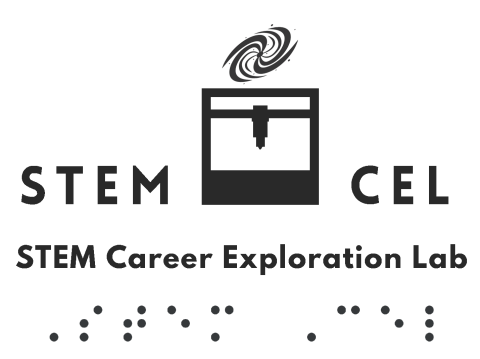Body
Image

3D Printing and Astronomy for High School Students with Blindness/Visual Impairments and their Educators
3D printing holds promise for students with blindness/visual impairments (B/VI) in addressing astronomy content, concept development, and providing access to information normally displayed visually. To help bolster astronomy and STEM opportunities for students with B/VI, we developed the STEM Career Exploration Lab (CEL), which employs tactile astronomy instruction via 3D printing and specially designed 3D-printed models. Our unique project centerpiece is the 3D printer build, where students with B/VI assemble and use desktop 3D printers. By the end of 2024, we will have held 18 week-long STEM CEL summer camps in 12 states, 3 in each of the 4 main US census regions. We collaborated with Teachers of the Visually Impaired and general education STEM teachers via annual Educator Partner Institutes (EPIs) to develop our astronomy lessons and 3D models. These educators also assist with the STEM CEL summer camps. Thirty-three teachers from 11 states have participated. We gathered pre- and post-intervention data via surveys, astronomy assessments, and interviews, resulting in what is likely the largest research study on astronomy and 3D printing instruction for students with B/VI. Once fully evaluated and refined, we will make our 3D models and lessons freely available. We find that with appropriate context and guidance, 3D printing is effective in increasing scientific understanding and showcasing scientific data (largely from space telescopes) for appreciation of astronomy and STEM.
Pillar 1: Innovative Use of Technologies in Learning and Teaching
Our project centerpiece is the 3D printer build, where high school students with B/VI assemble and use desktop 3D printers. Our STEM CEL lessons focus on spatial thinking and employ tactile 3D printed models, other tactile materials, sound and kinesthetic activities to teach astronomy and STEM. The backbone of our program is engagement with Teachers of the Visually Impaired and High School STEM teachers via Educator Partner Institutes, where we work together to address barriers to success in STEM of students with B/VI.
Pillar 2: Partnerships for Career and Workforce Preparation.
We introduce high school students with B/VI to professional role models with B/VI who have successful STEM careers. We also incorporate field trips to local businesses and universities that afford insights into possible STEM careers.
Pillar 3: Strategies for Equity in STEM Education
Students with B/VI often have other disabilities that also need to be accommodated when teaching STEM. Students with B/VI also often do not have the same life experiences and background knowledge as their sighted peers. There is a dearth of resources in STEM for students with B/VI, so most STEM materials must be developed from scratch and a wide range of materials is needed, e.g. tactile models (2D & 3D), braille, large print, audio, etc. 3D printed models can work, but often not by themselves.

Discipline(s)
Engineering
Physics and astronomy
Other
Target Gradespan(s)
High school (9-12)
Post-secondary
Target Participant(s)
Youth / students
Educators
Participants with disabilities
Project Setting(s)
Informal Education
Category
Developing and Testing Innovations (DTI)
Research Study